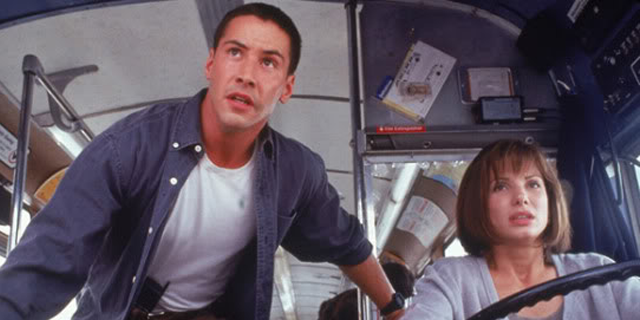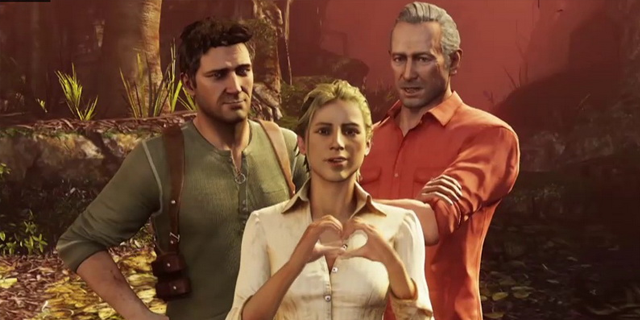As more and more action movies come out each summer, they all tend to blend together. In order for Hollywood to make sure the newest film is a sure thing, it must tread some proven ground to make sure the masses will accept it. Once in a while, a big-time action movie will stand above the rest with snappy dialogue, more impressive action scenes or a budget that allows the use of cutting-edge technology, but they’ll still include a number of cliches. The good guys will win, everything will be wrapped up and fixed within the next two hours and, perhaps most importantly, the hero will almost always get the girl. I like to call this “Speed syndrome”.
In these action movies, the hero, a white American male in his late 20s or early 30s, will meet his love interest, a white American female in her mid-20s. These two will invariably fall in love over the course of the film’s events, which is more than likely freakin’ ridiculous when you think about it. These two people have known each other for barely a few hours, often have nothing in common and usually start the film out hating each other. But when they’ve defeated a group of treasure-hunting nazis or stopped a global terrorist from stealing all the world’s gold together, a love connection happens.
I always figured that, once the story was over and they go back to their normal routine, these relationships can’t possibly last. Once the adrenaline stops, and the princess of whatever realizes the “action hero” is just a dude who got swept up in a villain’s plot and looks like Bruce Willis, she’ll be on a plane back to her home country. The adventure’s over. And I think this is typified with the Speed franchise. At the end of Speed, the audience believes without the shadow of a doubt that Keanu Reeves and Sandra Bullock were made for each other, but based on what? They’ve known each other for a couple of days and that entire span of time was spent in a bus while one of them was driving. They barely even have a conversation beyond:
“Keep driving while I yell at Dennis Hopper over the phone.”
“Okay.”
“And stay over 50 miles per hour.”
“I said okay, jeez.”
Despite how perfectly matched they may seem by the credits, Speed’s inevitable sequel Speed 2 rolls around and Keanu is nowhere in sight. Even though everything else about the film is strikingly similar to the first movie besides the substitution of a boat for the bus, Sandra Bullock manages to fall in love with yet another loose-cannon cop with wooden acting.
For the same reasons Dr. Indiana Jones can’t keep a love interest for two films, a relationship built around an action movie cannot stand. This is the same deal throughout the Uncharted series. Elena is a major player in the games, but usually seems to show up about halfway through the plot in both sequels. She appears by pure happenstance or is contacted as a means for Drake to get something he wants. In Uncharted, it was to get on the news, and in Uncharted 3, Nathan just wanted to use her connections to break into a building. Despite the way Nathan is constantly putting her in danger, Elena is drawn to him when she sees him murder hundreds of foreigners. In the second game, Drake gets her boyfriend killed and it barely registers with her. After the cutscene, it’s like they were never apart.
Many people have brought this up as a flaw in her character, but I think it makes perfect sense. As a globe-trotting video journalist, we see her constantly risk her own life as well because she’s obviously some kind of thrill-seeker. But after the smoke clears and the credits roll, Elena snaps to her senses and realizes this relationship is a bad idea. No matter how sweetly each game ends, the next one will start with Drake being betrayed by whatever woman he’s been occupying his time with until his next chance with Elena. But if you have the right stubble, bad attitude and keep that bus above 50 miles an hour, any woman could be yours.





















